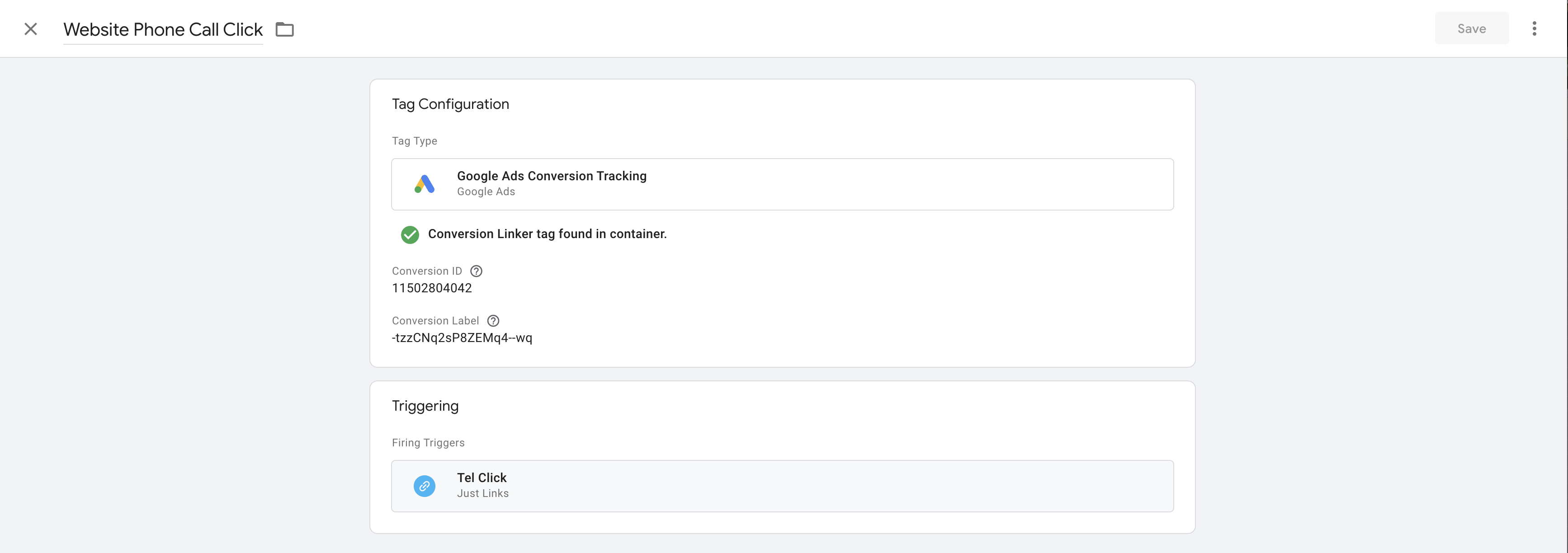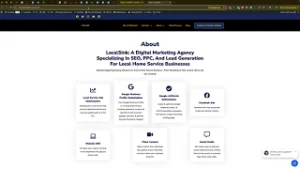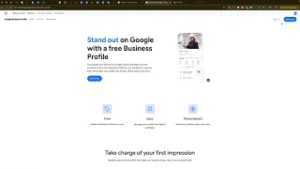Tracking phone call conversions is essential for businesses that rely on phone inquiries to generate leads and sales. By setting up Google Ads Conversion Tracking for phone calls, you can measure the effectiveness of your advertising campaigns, optimize your ad spend, and gain valuable insights into customer behavior. In the “How to Set Up Google Ads Conversion Tracking for Phone Calls” video, you learn a comprehensive method to implement this tracking using Google Tag Manager. This detailed guide will expand on those instructions, providing you with step-by-step directions, best practices, and additional tips to ensure your phone call conversions are accurately tracked and effectively utilized.
Why Phone Call Conversion Tracking Matters
Phone calls are a direct and personal way for customers to engage with your business. Tracking these conversions provides several benefits:
Measure Campaign Effectiveness
By tracking phone call conversions, you can determine which ads, keywords, and campaigns are driving the most valuable customer interactions. This data is crucial for assessing the ROI of your marketing efforts.
Optimize Ad Spend
Understanding which elements of your campaigns are performing well allows you to allocate your budget more efficiently. Invest more in high-performing areas and adjust or eliminate underperforming segments.
Gain Customer Insights
Analyzing phone call data helps you understand customer preferences and behavior. This information can guide your marketing strategies and improve customer service.
Enhance Reporting
Detailed conversion tracking enables you to provide comprehensive reports to stakeholders, demonstrating the tangible impact of your advertising campaigns.
Step-by-Step Guide to Setting Up Phone Call Conversion Tracking
Follow these steps to set up Google Ads Conversion Tracking for phone calls using Google Tag Manager (GTM).
Step 1: Create a Conversion Action in Google Ads
- Sign In to Your Google Ads Account
- Navigate to Google Ads and log in with your credentials.
- Access the Conversions Section
- In the top menu, click on the Tools and Settings icon (🔧).
- Under the Measurement section, select Conversions.
- Create a New Conversion Action
- Click on the + New conversion action button.
- Choose Phone calls as the conversion source.
- Configure the Conversion Action
- Category: Select Calls to a phone number on your website.
- Conversion Name: Enter a descriptive name, such as “Website Phone Call Click”.
- Value: Choose Don’t use a value unless you want to assign a monetary value to each call.
- Count: Select One to count each call once, avoiding multiple counts for repeat calls from the same user.
- Click-through conversion window: Set an appropriate time frame (e.g., 30 days) based on your sales cycle.
- Call reporting: Enable Use Google forwarding numbers to track call details without revealing your actual phone number.
- Set Up the Tag
- Under Tag setup, choose Use Google Tag Manager.
- Note down the Conversion ID and Conversion Label provided. You will need these for GTM.
- Finalize and Save
- Click Done to save your new conversion action.
Step 2: Configure Google Tag Manager
- Sign In to Your Google Tag Manager Account
- Navigate to Google Tag Manager and log in.
- Select Your Container
- Choose the container associated with your website where you want to implement the conversion tracking.
- Create a New Tag
- Click on Tags in the left-hand menu.
- Click the New button to create a new tag.
- Name the Tag: For example, “Google Ads Phone Call Conversion”.
- Set Up the Tag Configuration
- Click on Tag Configuration and select Google Ads Conversion Tracking.
- Enter the Conversion ID and Conversion Label you obtained from Google Ads.
- Set Up the Trigger
- Click on Triggering and then the + icon to add a new trigger.
- Name the Trigger: For example, “Phone Call Click”.
- Choose Trigger Type: Select Just Links under Click triggers.
- Configure Trigger:
- Choose Some Link Clicks.
- Set the condition to trigger on the phone number link. For instance:
- Click URL contains
tel:
- Click URL contains
- Click Save to finalize the trigger.
- Save and Publish the Tag
- After configuring the tag and trigger, click Save.
- Click on Submit in the top-right corner.
- Enter a version name and description (e.g., “Added Phone Call Conversion Tracking”).
- Click Publish to make the changes live.
Step 3: Verify the Conversion Tracking Setup
- Use Google Tag Assistant
- Install the Google Tag Assistant Chrome extension if you haven’t already.
- Navigate to your website and perform a test phone call by clicking the phone number link.
- Check in Google Ads
- Go back to your Google Ads account.
- In the Conversions section, verify that the conversion was recorded.
- Test Multiple Times
- Submit the phone call conversion multiple times to ensure consistency in tracking.
Step 4: Monitor and Optimize
- Analyze Conversion Data
- Use Google Ads reports to monitor the performance of your phone call conversions.
- Identify which campaigns, ads, and keywords are driving the most phone calls.
- Optimize Campaigns
- Adjust your bids, budgets, and targeting based on the conversion data to maximize ROI.
- Focus on high-performing areas and refine or eliminate underperforming segments.
Best Practices for Phone Call Conversion Tracking
Implementing best practices ensures that your conversion tracking setup is both accurate and effective.
Ensure Accurate Tag Placement
- Correct Placement: Make sure the Meta Pixel code is correctly placed in the
<head>section of your website’s HTML. - Consistent IDs: Verify that the Pixel ID in the code matches the one in your Meta Ads Manager.
Use Descriptive Naming Conventions
- Tag Names: Name your tags descriptively (e.g., “Google Ads Phone Call Conversion”) to easily identify them in GTM.
- Trigger Names: Similarly, name triggers clearly to avoid confusion when managing multiple tags.
Regularly Monitor Conversion Data
- Performance Tracking: Regularly review your conversion data in Google Ads to identify trends and areas for improvement.
- Adjust Campaigns: Use the insights gained from conversion data to refine your ad targeting, messaging, and budget allocation.
Protect Against Double Tracking
- Unique Triggers: Ensure that each conversion action has a unique trigger to prevent multiple tags from firing for a single action.
- Thorough Testing: Test your setup thoroughly to confirm that each phone call is tracked only once, maintaining accurate data collection.
Common Mistakes to Avoid
Avoiding these common pitfalls can enhance the effectiveness of your phone call conversion tracking efforts.
Incomplete Tag Setup
- Impact: Incomplete or incorrect tag setup can lead to missed conversions and inaccurate data.
- Solution: Follow each step meticulously and verify each part of the setup using testing tools.
Ignoring Mobile Users
- Impact: Failing to account for mobile users can result in incomplete tracking, as phone calls often originate from mobile devices.
- Solution: Test your conversion tracking on both mobile and desktop devices to ensure consistency.
Not Updating After Website Changes
- Impact: Changes to your website structure or URL can break your conversion tracking setup.
- Solution: Update your GTM triggers and tags immediately after making significant changes to your website.
Overcomplicating the Setup
- Impact: An overly complex setup can lead to errors and make troubleshooting difficult.
- Solution: Keep your conversion tracking setup as simple and straightforward as possible, focusing on essential actions.
Neglecting Regular Audits
- Impact: Over time, tracking setups can become outdated or accumulate errors, leading to inaccurate data.
- Solution: Conduct regular audits of your conversion tracking setup to ensure it remains accurate and effective.
Frequently Asked Questions
Do I Need Google Tag Manager to Track Phone Call Conversions?
No, you don’t necessarily need Google Tag Manager to track phone call conversions. However, using GTM simplifies the process of managing and deploying tracking codes without needing to modify your website’s code directly. It offers greater flexibility and ease of use, especially for businesses with multiple tracking needs.
How Can I Assign a Value to Each Phone Call Conversion?
When setting up your conversion action in Google Ads, you can choose to assign a specific value to each conversion. This value can represent the average revenue you expect from a phone call or the importance of the call to your business. Assigning values helps in measuring the ROI of your campaigns more accurately.
Can I Track Multiple Phone Numbers on My Website?
Yes, you can track multiple phone numbers by creating separate conversion actions and corresponding tags and triggers in Google Tag Manager. Ensure each phone number has a unique identifier or link to differentiate between them.
What If My Phone Number Link Uses a Different Format?
If your phone number link doesn’t use the tel: format, you can adjust the trigger conditions in GTM accordingly. For example, if your link uses a JavaScript function or another protocol, set the trigger based on that specific identifier.
How Do I View Conversion Data in Google Ads?
After setting up conversion tracking, go to the Conversions section in Google Ads. Here, you can view detailed reports on the number of conversions, conversion rate, cost per conversion, and other relevant metrics. Use these insights to evaluate and optimize your campaigns.
Maximizing the Impact of Phone Call Conversion Tracking
To fully leverage the benefits of phone call conversion tracking, integrate these strategies into your broader marketing and operational plans.
Align with Your Marketing Goals
- Define Clear Objectives: Identify what you want to achieve with your phone call tracking, such as increasing lead generation, improving customer service, or boosting sales.
- Tailor Campaigns to Goals: Ensure that your ad campaigns and tracking setup align with your business objectives to maximize effectiveness.
Integrate with CRM Systems
- Seamless Data Flow: Connect your phone call conversion data with your Customer Relationship Management (CRM) system to streamline lead management and follow-up processes.
- Enhanced Lead Nurturing: Use the data from phone call conversions to segment your leads and tailor your nurturing strategies, increasing the likelihood of converting leads into customers.
Utilize Advanced Analytics
- Multi-Channel Attribution: Understand how different marketing channels contribute to phone call conversions. Use this information to develop a multi-channel attribution model that accurately reflects your marketing efforts.
- Behavioral Insights: Analyze the behavior of users who make phone calls to gain deeper insights into customer preferences and improve your marketing strategies.
Foster Team Collaboration
- Shared Responsibilities: Ensure that all team members understand the importance of accurate conversion tracking and work collaboratively to maintain the tracking setup.
- Training and Guidelines: Provide training on using Google Ads and Tag Manager effectively. Ensure that team members are equipped to manage and troubleshoot the tracking setup.
Enhance Customer Experience
- Personalized Follow-Ups: Use the information from phone call conversions to personalize follow-up communications with leads, addressing their specific needs and increasing engagement.
- Responsive Service: Ensure that your team promptly responds to phone calls tracked as conversions. A swift response can significantly improve conversion rates and customer satisfaction.
Conclusion
Setting up Google Ads Conversion Tracking for phone calls using Google Tag Manager is a vital step for businesses aiming to optimize their marketing efforts and drive more qualified leads. By following the detailed steps outlined in this guide, implementing best practices, and avoiding common mistakes, you can ensure that your phone call conversions are accurately tracked and effectively utilized. Proper conversion tracking not only enhances your ability to measure campaign performance but also provides valuable insights to refine your marketing strategies, ultimately leading to sustained business growth and success.







